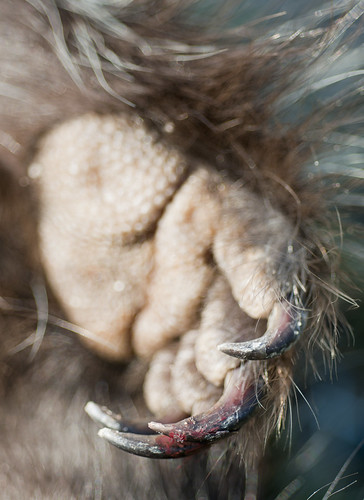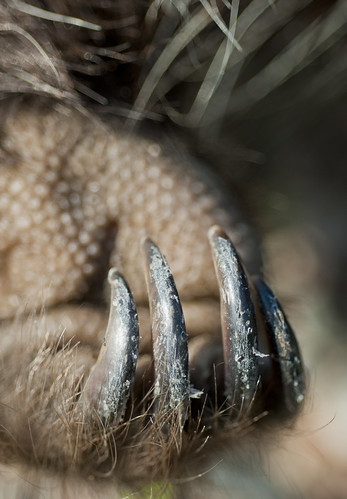Porcupines are also well-known for their sometimes-strange gnawing antics – I've heard many stories from the U.P. about porcupines chewing holes into outhouse walls in their search for salt and minerals. Understandably, this sort of behavior has given them a rather poor reputation. Between gnawing holes into property and filling an attacking dog's face with quills, porcupines aren't often well-liked! They are, however, interesting animals that deserve a closer look.
On the Fourth of July, a large porcupine was hit on M-28, 15 miles east of Marquette. Many of the quills had detached from the porcupine's back, resulting in a spray of them across the shoulder of the road. Interestingly, the only insects at the scene were ants, and they sure weren't happy that I was there to photograph the body.
Porcupines are, in a way, quite shapeless. Their long fur and quills give them the appearance of a large, spiny guinea pig, and their eyes are small and beady. As a result, they're hard to photograph, so I ended up focusing on the porcupine's front feet, which are really fascinating.
Porcupines are rodents, and like all rodents, they have four toes on their front feet. Because they spend so much of their time in trees, their claws are highly specialized for climbing. In addition, their paw pads are covered in little bumps, which improve grip.
As shy animals with a hefty defense system, porcupines have few natural enemies. Their number-one threat is probably traffic, but they are also the favorite food of a certain large mustelid – the fisher. Porcupines have no quills and very thin fur on their bellies, and fishers take advantage of this by flipping their spiny prey onto its back before attacking.
Learn more about Erethizon dorsatum, the North American Porcupine, here.






No comments:
Post a Comment